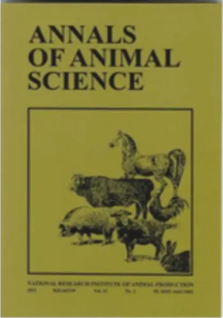Document type : News from Wageningen University
Author: Wageningen University
One outcome for the project is a welfare check that allows each pig farmer to assess the risk of biting behavior on their own farm. "Every pig farm is unique, so controlling biting behavior requires a farm-specific approach," Van der Peet explains. "Is the temperature in the buildings good enough? do the animals have enough space near the feed trough? does the pig farmer know enough to be able to intervene proactively? is there good cooperation with the feed advisor and the veterinarian?" Asking about these sorts of things will help to reduce the risk of biting behavior."
Preview: It is still too early to stop docking piglets' tails on all pig farms in the Netherlands. That is the conclusion of research carried out by Wageningen University & Research and Utrecht University, commissioned by the Producers Organisation for Pig farming (POV) and the Dutch Ministry of Agriculture, Nature and Food Quality. The reason for this outcome is that keeping pigs with intact tails is complex. A pig farmer who stops docking pigs tails should also be able to earn extra money. Training will help pig farmers and yard managers to recognize and reduce the risk of tail-biting. [….]
One of the project’s end products is a welfare check that allows an individual pig farmer to make a risk assessment for biting behavior on his own farm. 'Every pig farm is unique and tackling biting behavior therefore requires a farm-specific approach', says Van der Peet. 'Is the climate in the stables good enough, do the animals have enough space near the feed trough, does the pig farmer have sufficient knowledge to intervene proactively, is there good cooperation with the feed consultant and the veterinarian? These kinds of questions all play a role in minimizing the risk of biting behavior.'
Next step
The project's network of pig farmers has gained a lot of experience, but due to unexpected bite outbreaks they are still hesitant to stop docking. Nevertheless, some pig farmers have succeeded in keeping pigs with long tails. "Keeping pigs with a long tail is possible, but with a 'proviso'," says Van der Peet, "We have three pieces of advice to take the next step. And they require effort from the entire chain: pig farmers, farmers, slaughterhouses, retailers and the government.
- Firstly, we recommend working across the sector to build support for the welfare check. It really offers pig farmers new insights. There are still some low-hanging fruits that pig farmers can seize.
- Secondly, continuously support pig farmers and their staff with knowledge, training and coaching to learn to recognise (the risks of) tail-biting and to intervene in an early stage. It is also important to include the farmer in this coaching process so that the farmer can take the next step towards stopping tail docking with well-founded advice. In addition, financial compensation is needed. A basic compensation from the market for the extra costs (labour) required to keep pigs with a long tail, but also a calamity fund to absorb economic damage. If, despite all our efforts, bite problems do occur, it should not just be the pig farmer who pays the bill.
- Thirdly, the higher hanging fruit will probably require investments (read: renovation/new construction) in stalls. An acceleration of the process to stop tail docking is possible if pig farmers receive financial support to adapt the farm (possibly with a new building). Conversions such as source directed approach to reduce emissions and barn modifications for keeping pigs with long tails can reinforce each other.





